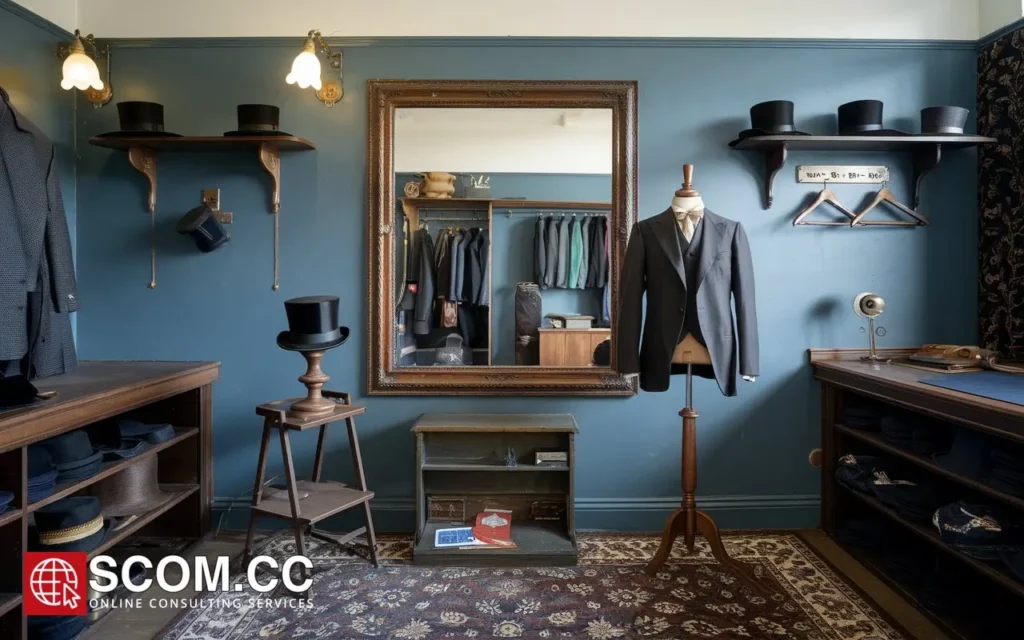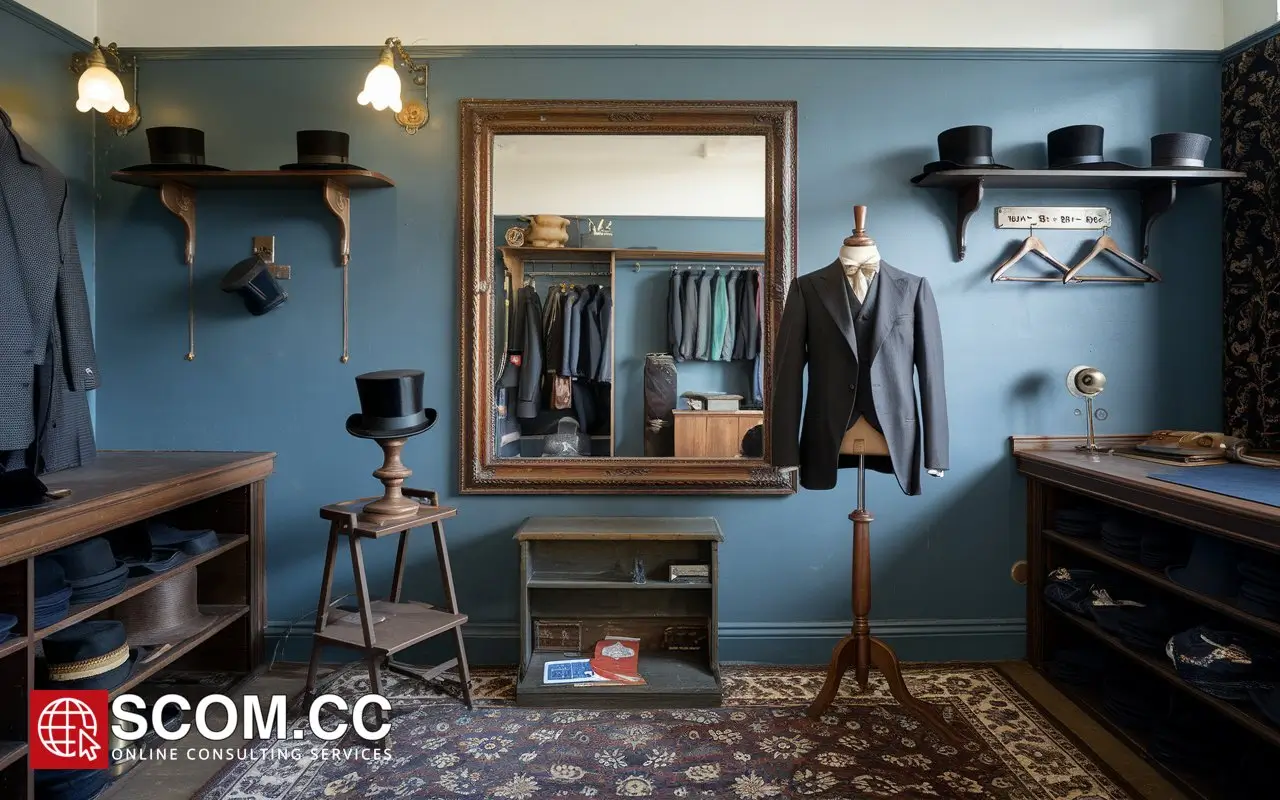What Were the Key Innovations in Tailoring Throughout the 20th Century?

- What Were the Key Innovations in Tailoring Throughout the 20th Century?
- Early 20th Century: The Era of Transition
- Mid-20th Century: Technological Advancements and Changing Trends
- Late 20th Century: Modernization and Globalization
- Conclusion: The Legacy of 20th Century Innovations
-
FAQ
- 1. What were the major advancements in sewing technology during the early 20th century?
- 2. How did the rise of ready-to-wear fashion impact traditional tailoring?
- 3. What influence did World War II have on tailoring practices?
- 4. How did synthetic fabrics change the tailoring industry in the mid-20th century?
- 5. What role did high fashion and couture play in the evolution of tailoring?
- 6. How did the introduction of Computer-Aided Design (CAD) impact tailoring?
- 7. What trends characterized the tailoring industry towards the end of the 20th century?
What Were the Key Innovations in Tailoring Throughout the 20th Century?
Introduction to Tailoring Innovations
The 20th century was a period of dynamic change and advancement in the world of tailoring. Innovations in technology, materials, and design transformed tailoring from a traditional craft into a highly specialized and modern industry. This exploration highlights the key innovations in tailoring throughout the 20th century, examining their impact on fashion and garment production.
Early 20th Century: The Era of Transition
The Advent of the Sewing Machine
At the dawn of the 20th century, the sewing machine was already an established tool, but its continuous evolution played a significant role in tailoring. Innovations such as the lockstitch sewing machine enhanced the precision and efficiency of garment construction. This period also saw the introduction of the zigzag stitch and other decorative stitches, allowing for greater creativity and versatility in tailoring.
Ready-to-Wear Revolution
The early 20th century marked the rise of the ready-to-wear fashion industry. Tailors began producing standardized patterns and sizes, making high-quality clothing more accessible to the general public. This shift was driven by the increased demand for affordable and fashionable garments, especially in the wake of economic changes and post-war recovery.
Mid-20th Century: Technological Advancements and Changing Trends
The Impact of World War II
World War II brought significant changes to tailoring. The war effort led to the adoption of military-inspired designs, such as the utility suit and military jacket, which influenced civilian fashion. Tailoring techniques adapted to new fabric constraints and practical requirements, emphasizing durability and functionality.
Introduction of Synthetic Fabrics
The post-war era saw the introduction and popularization of synthetic fabrics such as nylon, polyester, and rayon. These materials offered greater durability, ease of care, and affordability compared to traditional fabrics like wool and silk. Tailors adapted to these new materials by developing techniques that accommodated their unique properties.
The Rise of High Fashion and Couture
The mid-20th century was also characterized by the emergence of high fashion and couture. Designers like Christian Dior and Coco Chanel revolutionized tailoring with their innovative designs, such as Dior’s New Look and Chanel’s classic suits. These designs emphasized structured silhouettes and luxurious fabrics, setting new standards in tailoring.
Late 20th Century: Modernization and Globalization
Digital Technology and CAD
The late 20th century witnessed significant technological advancements with the introduction of Computer-Aided Design (CAD) in tailoring. CAD systems revolutionized pattern making, allowing for greater precision and efficiency in garment design. This technology enabled tailors to create intricate designs and accurate fittings with ease.
The Emergence of Fast Fashion
The rise of fast fashion in the late 20th century transformed the tailoring industry by introducing rapid production cycles and trend-driven designs. Retailers like Zara and H&M popularized mass-produced garments that emphasized quick turnaround times and affordability. This shift challenged traditional tailoring practices and led to the development of new production methods.
Sustainable Practices
As awareness of environmental issues grew, the tailoring industry began to embrace sustainable practices. This included the use of eco-friendly fabrics, such as organic cotton and recycled materials, as well as ethical manufacturing practices. Tailors and designers began to focus on reducing waste and promoting sustainability within the industry.
Conclusion: The Legacy of 20th Century Innovations
The 20th century was a transformative era for tailoring, marked by key innovations that reshaped the industry. From the advancements in technology and materials to the rise of new fashion trends, these innovations have had a lasting impact on how garments are designed, produced, and worn. As the industry continues to evolve, it is likely that the legacy of these innovations will influence future developments in tailoring.
Summary Table
| Period | Innovation | Description |
|---|---|---|
| Early 20th Century | Sewing Machine Advances | Introduction of lockstitch and zigzag stitches, enhancing precision and creativity. |
| Early 20th Century | Ready-to-Wear Revolution | Shift towards standardized patterns and sizes, making high-quality clothing more accessible. |
| Mid-20th Century | Impact of World War II | Adoption of military-inspired designs; focus on durability and practicality in tailoring. |
| Mid-20th Century | Synthetic Fabrics | Introduction of materials like nylon and polyester, offering durability and affordability. |
| Mid-20th Century | High Fashion and Couture | Emergence of couture designs with structured silhouettes and luxurious fabrics by designers like Dior. |
| Late 20th Century | Digital Technology and CAD | Use of Computer-Aided Design for precise pattern making and garment fitting. |
| Late 20th Century | Fast Fashion | Rise of mass-produced, trend-driven garments with quick production cycles. |
| Late 20th Century | Sustainable Practices | Adoption of eco-friendly fabrics and ethical manufacturing practices. |
FAQ
1. What were the major advancements in sewing technology during the early 20th century?
In the early 20th century, the major advancements in sewing technology included the development of the lockstitch sewing machine and the introduction of the zigzag stitch. These innovations improved the precision and efficiency of garment construction, allowing for more intricate and durable stitching.
2. How did the rise of ready-to-wear fashion impact traditional tailoring?
The rise of ready-to-wear fashion shifted the focus from bespoke tailoring to standardized patterns and sizes. This made high-quality clothing more accessible to a broader audience and increased the demand for mass-produced garments, altering the traditional tailoring landscape.
3. What influence did World War II have on tailoring practices?
World War II influenced tailoring by popularizing military-inspired designs such as utility suits and military jackets. The need for practicality and durability during the war led to adaptations in tailoring that emphasized functionality and ruggedness in civilian clothing.
4. How did synthetic fabrics change the tailoring industry in the mid-20th century?
Synthetic fabrics like nylon, polyester, and rayon revolutionized the tailoring industry by offering greater durability, affordability, and ease of care compared to traditional fabrics. These materials became widely used in garment production, influencing both design and manufacturing practices.
5. What role did high fashion and couture play in the evolution of tailoring?
High fashion and couture played a significant role in shaping the evolution of tailoring by introducing innovative designs and luxurious fabrics. Designers like Christian Dior and Coco Chanel set new standards with their structured silhouettes and elegant garments, influencing both fashion trends and tailoring techniques.
6. How did the introduction of Computer-Aided Design (CAD) impact tailoring?
The introduction of Computer-Aided Design (CAD) revolutionized tailoring by enabling precise pattern making and garment fitting. CAD systems allowed for more accurate and efficient design processes, facilitating the creation of intricate patterns and custom fits.
7. What trends characterized the tailoring industry towards the end of the 20th century?
Towards the end of the 20th century, the tailoring industry saw trends such as the rise of fast fashion, which emphasized quick production cycles and trend-driven designs. Additionally, there was a growing focus on sustainable practices, including the use of eco-friendly materials and ethical manufacturing processes.

To explore more about tailoring, visit our Blog of Tailoring. If you have any questions or need assistance, go to our contact page. Additionally, you can find more information about tailoring and consulting at this tailoring and consulting portal.

Leave a Reply